
Last post in our structure series, I introduced the core antagonist, what I call the Big Boss Troublemaker. The BBT is our central opposition. This is the force responsible for creating the core story problem in need of resolution. While stories have all sorts of ‘antagonists’ we’ll get to them another time.
In fact, buckle up because this is Master’s Class material.
Today’s post is advanced content, since we’re going to explore the BBT far more deeply than ever before. I’ve blogged on the BBT before with a simpler explication. But, after 1,200 or so blogs, even I need a good challenge.
One of my goals this year is to offer far more demanding content and accelerated lessons. There are plenty of Writing 101 blogs catering to new writers. Hey, I’ve written a few hundred, myself.
Problem is, not all writers are brand new and even those who might be just starting out? It’ll be good for you to stretch your synapses and give the gray matter a hardcore workout. The Internet has plenty of ‘pink weight’ craft blogs and I don’t care to add any more. Namely because I know you guys are wicked smart and dying to be truly punished.
I meant pushed. Yes, pushed.
Here we go…
The CORE (IDEA)

The BBT is a wholly unique sort of antagonist. This specific antagonist, the BBT, is the BRAIN (mastermind) of all great stories. Why? Because all great stories involve an IDEA that must be defeated.
How do we do this?
Great stories are almost like living creatures. Like all living creatures, there are critical limitations when it comes to structure. What this means is not all ‘components’ are equally necessary for an organism to be considered ‘alive.’
If a kitten is born with no hair? We call it a Sphynx then sell it for big bucks to people who adore cats that resemble space aliens.
If our kitten is born with unusable back legs, it’s sad. But, we humans get creative and craft a Lego ‘kitten wheelchair’…producing a kitten now drunk with power. ZOOOOOOM! LOOK AT HIM GO ALL THE PLACES!
Ah, but a kitten born with no brain stem? Little to do but mourn. We can’t work around this missing ‘organ,’ no matter how much we may want to. Regardless how creative we get, actual life requires a brain that directs every other system.
The Living Story
We can say the same about story. It, too, must have a brain (core story problem/IDEA generated by BBT).
Some ‘elements’ of story are not, per se, required because they’re NOT the brain. These ‘components’ might simply be a matter of stylistic choice.
Loads of detailed description and weighty prose? Unnecessary. For instance, Hemingway’s Old Man and the Sea. Hemingway chose literary austerity to elicit a highly specific ‘feel’ in his work. Bold, exposed, nowhere to hide. No flowery exposition to ‘cover’ any plot weakness.
I happen to love flowery prose, which is why I don’t care for Hemingway’s stories but can respect the art.
Linear plotting, as in Point A to Point Z in sequence and in order? Not necessary either.
Sure, this three-act linear Aristotelian structure is the most common and the best place (in my POV) for emerging writers to begin and to master FIRST. It also happens to be the easiest structure on readers, which is why it’s the structure most commonly used.
But, again? It is not imperative for our story to progress linearly in time. This, again, is a stylistic choice and will often be employed for a purpose. There’s a specific effect the author desires to create.
Examples of Structure as Art

Image courtesy of Joana Coccarelli’s generosity via Flickr Creative Commons
Purple prose and a hundred-page lexicon of new terms, kingdoms, creatures are not the only ways (or even the best ways) to transition a story into art. Structure, when truly understood, is extremely powerful.
For instance, Chuck Palahniuk deliberately used nonlinear plotting for Fight Club. Gillian Flynn also employed nonlinear structure in Gone Girl.
Why? These authors chose these advanced plotting methods for excellent and very specific reasons: to craft the unreliable narrator.
In Amy Tan’s The Joy Luck Club, Tan also utilizes a non-linear structure. At first glance, the novel might seem like a mere compilation of flashbacks, but that is far from the case. We could ‘snip’ these stories apart, line them up in chronological order.
They would play out sequentially in mini three-act stories, bookended by a larger three-act story (Jing-Mei’s story about forgiving her dead mother Suyuan).
Yet, Tan’s story is addressing a dark force impacting three generations of Chinese women and their Chinese-American daughters. Thus, a simple linear structure wouldn’t deliver the message in a way that resounds so deeply this book would be worthy of a Pulitzer and a movie.
Yet, we must grasp the BBT or it’s impossible to create a simple linear plot. Forget about the fancy stuff. It’s imperative to fully grasp the power of the BBT or characters fall flat and stories will struggle to break out from the ‘meh.’
So, basics first.
Dead or Alive?

It doesn’t matter if we choose to use tons of detailed description or almost none, if we plot linearly or nonlinearly. We can include maps, made-up languages, on and on. These are all stylistic preferences which can all work so long as at the center of it all, the story must have a BRAIN (the idea).
The BBT is the IDEA that creates the core problem in need of resolution/defeat. Every book mentioned above has a Big Boss Troublemaker (and corresponding proxy/proxies).
Problem is, far too many emerging writers spend far more time pondering the color of their main character’s eyes (amethyst or peridot…no jade) than they do considering what the heck the MC is even up against.
WHY does he/she exist?
The BBT is the sole reason for our MC (main character) to exist. Period.
Whenever I blog about the BBT, inevitably I get the whole ‘But my MC is his/her own worst enemy’ counterpoint (which really isn’t a counterpoint at all).
First, a properly crafted MC always is his or her own worst enemy in the beginning. This is why the character must arc in order to win. If our MC is flawless and fully self-actualized, this is not a story.
It’s a sedative.
Back to structure.
Yes, Commercial BBTs Easier to See

I get it. In most commercial fiction, the BBT (core antagonist) is easier to spot (I.e. The Emperor in Star Wars or Buffalo Bill in Silence of the Lambs). Yet, even these ‘villains’ are driven by a ‘brain’—the BBT.
The BBT in Star Wars is that Perfect Rule Can Only Be Obtained By Total Control. The Emperor is merely the proxy—the brainchild—of this malevolent idea. He is the heart and hand that executes this idea. The Emperor, then, is the intangible made tangible…thus able to be defeated.
The BBT in Silence of the Lambs is Altering the Outside is ALL that Can Alter the Inside. Buffalo Bill is a tragic character and serves as the proxy executing the BBT BRAIN’s deadly and diseased idea. Again, though a simple ‘serial killer’ story, it is anything but.
Jame Gumb (Buffalo Bill) is the corporeal manifestation of the idea, thus only in this physical form can he (and the BRAIN’S agenda) be defeated.
Ideas can ONLY be defeated when they take on a physical form. Once this happens, our MC is then able to rise to the call and stake the beating heart (proxy) that’s pumping the (BBT) brain’s toxic tautology.
All well-written stories have a BBT…even if they’re not ‘in the reader’s face’ obvious. This is why, in previous lessons, I often lumped them together. Sauron is the BBT in The Lord of the Rings. Until Sauron is defeated, the story isn’t over.
Yet, particularly in more complex stories, we are wise to tease the BBT apart from the proxy. Explore and codify the IDEA, then select and craft the perfect proxy (Hand of the King…um BRAIN).
The Subtler BBT

Some BBTs (and their proxies) are tougher to spot. Ah, but just because a gas is odorless and tasteless doesn’t mean it isn’t there and that it isn’t also deadly.
Remember, many great works of fiction tackle any number of pervasive, potential, invisible or insidious social maladies…then use story to expose the ‘disease.’
This is why it’s wise to make the story also entertaining. If our novel bores the paint off the walls or is some thinly-veiled rant, no one will read it (a common problem with ‘literary’ stories).
Thus, if the story IS engaging, readers will pay attention. Then, once readers are listening, we writers can make the world aware of social, cultural, and personal cancers that plague humanity.
This takes skill and finesse, which is why I selected these particular stories to expound on our lesson.
The Old Man and the Sea

The Old Man and the Sea might seem like a simple Man vs. Nature story, and the giant marlin is the BBT…but not so fast. There are a lot of layers to this beyond the obvious. Yes, it is Man vs. Nature, but also Man vs. Man, Man vs. Himself and Man vs. Society.
The old Cuban fisherman, Santiago, has lost his identity because of his advanced age and inability to do what men in his culture and chosen occupation DO.
They catch fish.
Santiago, however, has gone 84 days without a single catch, rendering him a ‘salao,’ which is considered the worst form of unluckiness. Thus in his world, he’s now old, devoid of purpose, labeled a pariah and essentially banished.
The BBT would be Santiago’s culture—the Cubano definition of what makes him worthwhile and a MAN (an IDEA). The proxy of this ‘belief’ appears in the form of a monstrous marlin Santiago manages to snag—a catch that would redeem him—but it is a long, brutal battle where Santiago essentially ‘fails.’
Or did he?
By the time Santiago makes it to shore, he’s exhausted and has only a ravaged carcass that was once a magnificent creature as proof of his epic struggle. Yet, when the locals witness the sheer SIZE of the fish Santiago caught (even though now only skull and bones), Santiago is redeemed as a man, hailed a hero, and accepted back into the fold of his people.
Without the marlin (proxy), there is no story because Santiago has no possibly way to defeat the BBT (the IDEA that he is worthless).
Now, the marlin isn’t ‘bad’ or ‘evil’ at all. Yet, without the giant marlin, there is no mechanism for Santiago to win his redemption and earn restoration. If Santiago dies at sea or makes it back completely empty-handed…he loses.
Fight Club
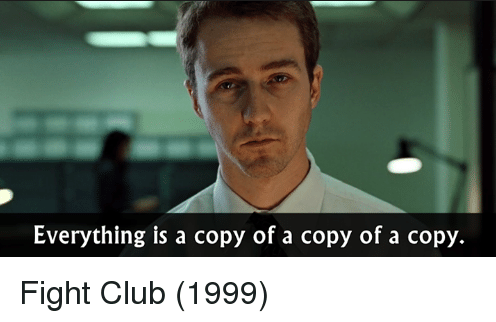
Chuck Palahniuk tackles a similar subject in Fight Club. This novel strikes out at modern culture (BBT), the notion that our society has somehow erased human beings and molded us into compliant, mindless drones.
The assertion in Fight Club is the IDEA that modern culture has robbed human agency, authenticity, and devoured true intimacy and purpose (for men in particular).
The story lays bare how sterilized, uncaring and unvested our modern world is regarding humans. This social malaise (BBT) is immediately evident when our unnamed protagonist goes to a doctor, desperate for help with debilitating insomnia…and he’s blown off.
Our MC is suffering profoundly, but is dismissed and minimized.
He is…no one.
He begins to realize he consists only of what he consumes; what he buys from Ikea, his job, etc. Without that? He does not exist.
This novel posits that we’ve created a world that takes and takes and takes and takes…until it uses us up. And we accept the inevitable horror with faces ‘calm as Hindu cows…’
Our MC wants to dismiss this new way of looking at his world, but…
Tyler Invades His Life
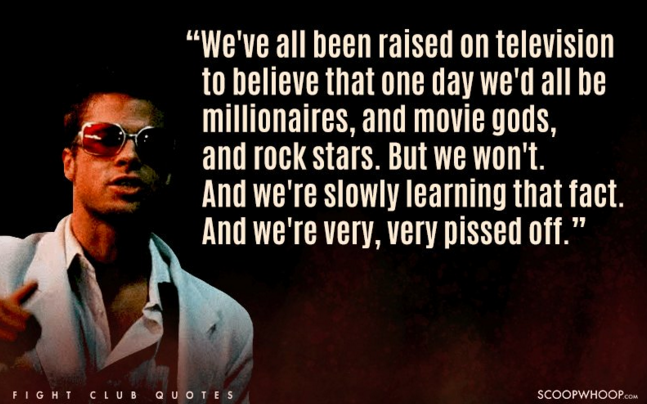
Our protagonist learns this new way of viewing his world when he encounters a sexy, unapologetic anarchist…Tyler Durden.
Tyler makes everything clear, gives voice to a nameless angst our MC hasn’t been able to pinpoint. Tyler eventually reveals his plan for the world to hear what the people have to say…LOUD and CLEAR.
But the plan Tyler (proxy enacting the IDEA) has ‘cooked up’ is horrible beyond imagination. Eventually our protagonist realizes Tyler Durden might be correct with his social assessment, but he also must be stopped because TYLER IS NO SAVIOR. Rather, Tyler is the VERY BEAST this toxic culture has created.
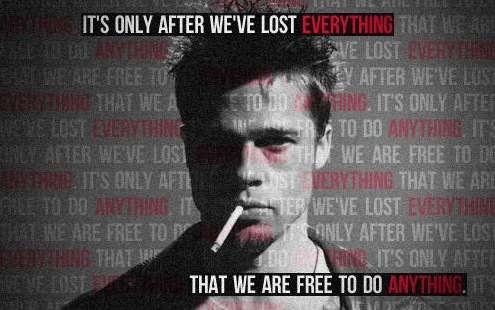
Our MC must finally see the TRUTH of Tyler—who and what he really is—and stop him before countless people die. It is by stopping Tyler that our MC will become a HERO because he’ll finally exist and can then exercise his human agency.
No Tyler Durden (proxy of the BBT), no story. No evil Tyler plan to stop, no way for the MC to truly be a man, a human, and exercise self-sacrifice and free will. If our hero fails to see the hard truth and stop Tyler, he fails.
Kill the heart and the brain will die.
Gone Girl
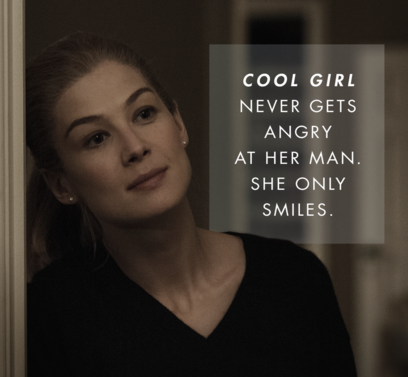
In Gone Girl, the BBT is the Idealization of Perfection. Perfect parents who dote and coddle and elevate a child to a sort of divine status. Perfect jobs. Perfect life. Perfect romance. Perfect marriage. Perfect behavior. Perfect adoration.
But does perfect even exist? Also, at what point do good intentions make gods? When does perfection turn into tyranny?
In Gone Girl, as mentioned, the BBT is the Idealization of Perfection (brain) and the proxy (heart and hands) is Amy Elliot Dunne (a.k.a. Amazing Amy).
Amy, the perfect wife, daughter, neighbor, friend, etc. goes missing under highly suspicious circumstances. When husband, Nick Dunne, becomes the prime (only) suspect for his ‘perfect’ wife’s murder, he’s forced to realize the truth about himself.
Even more terrifying, he has to face the truth about the woman he married.
He also must admit his humiliating flaws and publicly confess his ‘sins’ or his story has only one ending. Prison and the death penalty.
The BBT is IDEA that Perfect is Attainable. It is the Idealization of Perfection and the proxy is Nick’s wife, Amy (Amazing Amy) who then executes the physical reality of the flawed idea.
No missing and presumed dead Amy, no story.
The Joy Luck Club

Why I chose to create the term BBT is that ideas aren’t always good or bad. This means the proxy (proxies) might not be per se ‘evil.’ It’s critical to understand this distinction in certain genres (I.e. women’s fiction, general fiction, literary).
The BBT in The Joy Luck Club is a cultural conflict. Obedience Makes a ‘Good’ Chinese Woman. In Chinese culture there’s a profound reverence to maintain the old ways, no questions asked. Females are obedient, quiet, dutiful, self-sacrificing, no matter the cost.
All noble qualities.
Yet, can these ‘noble qualities’ also have devastating consequences? Yes.
In the novel, the mothers immigrated from China for a new life, believing they’d left the old life (and ways) behind. Yet, it’s only when their daughters grow into women that the BBT comes into full bloom and can be seen.
The mothers realize they may have changed geography, but they’ve unwittingly passed down the very ideas they’d sacrificed everything to outrun.
What is ‘Good’?

Through the stories, we witness how the grandmothers were all excellent examples of the ‘good Chinese woman’, but this made them victims. These women suffered tremendously for doing what was ‘honorable’ and the ‘Chinese way.’
This ‘noble suffering’ then flowed down the cultural tributaries from the grandmothers to the mothers and finally to the daughters.
Thus, in the story, the mothers and daughters—together—must learn to forgive themselves and each other. They then must grow and challenge the series of BBT proxies with action and intention.
For instance, Lena’s mother Ling Ling confesses her own weakness, then challenges Lena to stand up to her abusive husband (proxy of BBT; Harold, the ‘Traditional Chinese Husband’ who is a good provider, but who is also controlling, emotionally bankrupt, and condescending). If Lena stays with Harold, who has zero intention of changing, she loses.
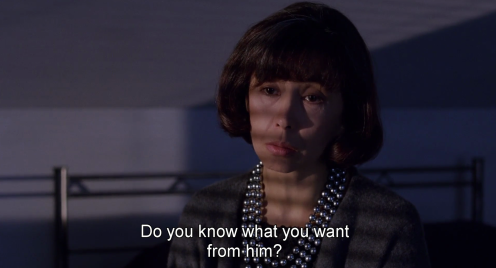
If Lena swallows her pride and anger and sacrifices her self-respect in order to ‘suffer with dignity’…she loses. The BBT wins because though inaction Lena, by default, is agreeing with the IDEA that Obedience Makes the ‘Good’ Chinese Woman.
The ways of China didn’t work well for the grandmothers, but those women had no choice. The mothers and daughters, however, DO have a choice, which is the point of the book.
By burying the past and creating new futures, the BBT (Obedience Makes the ‘GOOD’ Chinese Woman) is challenged and defeated.
Obedience is not universally good. In fact, it can be downright deadly.
“Because sometimes that is the only way to remember what is in your bones. You must peel off your skin, and that of your mother, and her mother. Until there is nothing. No scar, no skin, no flesh.” -An-mei
~Amy Tan, The Joy Luck Club
In the End
I’ve worked hard to give a wide variety of examples to assist you as we deep-dive this component of structure. A story begins with an IDEA. The core antagonist has an IDEA that must be made corporeal in order to be defeated. If we fail to do this, we don’t have a story.
For anyone who longs to accelerate their plot skills, I recommend my On Demand Plot Boss: Writing Novels Readers Want to BUY. Two hours of intensive plot training from MOI…delivered right to your computer to watch as much as you like 😀 .
Or to make stabbing motions at my head with a pen. Die! Die! Kristen we loves you but hates you!
I also am offering my Bullies and Baddies: Understanding the Antagonist on March 15th (7-9 EST) recording included with purchase if you can’t make it. This class is for in-depth training on how to balance all types of antagonists for maximum impact.
What Are Your Thoughts?
I do love hearing from you. Where you struggle, because we ALL do. What you want to know more about? Where you get stuck, etc.
I look forward to helping you guys become stronger at your craft. What are some of your biggest problems, hurdles or misunderstandings about plot? Where do you most commonly get stuck?
I love hearing from you!
And am not above bribery!
What do you WIN? For the month of FEBRUARY, for everyone who leaves a comment, I will put your name in a hat. If you comment and link back to my blog on your blog, you get your name in the hat twice. What do you win? The unvarnished truth from yours truly. I will pick a winner once a month and it will be a critique of the first 20 pages of your novel, or your query letter, or your synopsis (5 pages or less).
By the way, yes I also offer classes. I want y’all to write amazing books because that means more word of mouth sales. Alas, we still should learn the business of our business so I hope y’all will check out the classes below. I changed the dates due to having the flu :/ .
Business of the Writing Business: Ready to ROAR!
 Instructor: Kristen Lamb
Instructor: Kristen Lamb
Price: $55.00 USD
Where: W.A.N.A. Digital Classroom
When: Thursday, March 1st, 2018, 7:00-9:00 p.m. EST
Being a professional author entails much more than simply writing books. Many emerging authors believe all we need is a completed novel and an agent/readers will come.
There’s a lot more that goes into the writing business…but not nearly as much as some might want us to believe. There’s a fine balance between being educated about business and killing ourselves with so much we do everything but WRITE MORE BOOKS.
This class is to prepare you for the reality of Digital Age Publishing and help you build a foundation that can withstand major upheavals. Beyond the ‘final draft’ what then? What should we be doing while writing the novel?
We are in the Wilderness of Publishing and predators abound. Knowledge is power. We don’t get what we work for, we get what we negotiate. This is to prepare you for success, to help you understand a gamble from a grift a deal from a dud. We will discuss:
- The Product
- Agents/Editors
- Types of Publishing
- Platform and Brand
- Marketing and Promotion
- Making Money
- Where Writers REALLY Need to Focus
A recording of this class is also included with purchase.
Self-Publishing for Professionals: Amateur Hour is OVER
 Instructor: Cait Reynolds
Instructor: Cait Reynolds
Price: $99.00 USD
Where: W.A.N.A. Digital Classroom
When: Friday, March 2nd, 2018, 7:00-10:00 p.m. EST
Let’s get down to brass tacks. Are you going to go KDP Select or wide distribution with Smashwords as a distributor? Are you going to use the KDP/CreateSpace ISBN’s or purchase your own package? What BISAC codes have you chosen? What keywords are you going to use to get into your target categories? Who’s your competition, and how are you positioned against them?
Okay, hold on. Breathe. Slow down. I didn’t mean to induce a panic attack. I’m actually here to help.
Beyond just uploading a book to Amazon, there are a lot of tricks of the trade that can help us build our brand, keep our books on the algorithmic radar, and find the readers who will go the distance with us. If getting our books up on Amazon and CreateSpace is ‘Self-Publishing 101,’ then this class is the ‘Self-Publishing senior seminar’ that will help you turn your books into a business and your writing into a long-term career.
Topics include:
- Competitive research (because publishing is about as friendly as the Red Wedding in Game of Thrones)
- Distribution decisions (because there’s actually a choice!)
- Copyright, ISBN’s, intellectual property, and what it actually all means for writers
- Algorithm magic: keywords, BISAC codes, and meta descriptions made easy
- Finding the reader (beyond trusting Amazon to deliver them)
- Demystifying the USA Today and NYT bestselling author titles
- How to run yourself like a business even when you hate business and can’t math (I can’t math either, so it’s cool)
Yes, this is going to be a 3-hour class because there is SO much to cover…but, like L’Oréal says, you’re worth it! Also, a recording of this class is also included with purchase.
The class includes a workbook that will guide you through everything we talk about from how to do competitive research to tracking ISBNs and distribution, and much, much more!
Time is MONEY, and your time is valuable so this will help you make every moment count…so you can go back to writing GREAT BOOKS.
DOUBLE-TROUBLE BUSINESS BUNDLE
BOTH classes for $129 (Save $25). This bundle is FIVE hours of professional training, plus the recordings, plus Cait’s workbook to guide you through everything from how to do competitive research to tracking ISBNs and distribution and more.








17 comments
11 pings
Skip to comment form
I swore I would not procrastinate today…then this post popped into my Inbox…
This is perfect — the perfect post. I love, and thank you, for sharing perceptions at this depth, with this much thoughtfulness.
The examples are wonderful, as they cover the several directions from which an IDEA can be realized, captured, and read. The IDEA-driven story freaks us out at a core level – the recognition makes you hold your breath, feel the goose flesh ripple across your skin, and become aware of blinking.
Thank you, as always, for taking us just a little bit further. Please don’t stop…
Okay, so I needed that. Thanks.
No, really. Because I’ve been reading blogs talking about defeating the villain in the climax, and not only do I not USE villains in my novels, I don’t even like READING novels with villains.
Idea As Villain? With a human face so we know when Idea has been defeated? I can totes do that. I can read that. I wanna read that. And thank you bazillion times for using examples of more subtle Idea-Villains. I loved Joy Luck Club and literally read my copy to pieces. The analyses here are really clarifying the concept for me.
I skim a lot of blogs and newsletters hoping my attention will snag on something thought-provoking. You snagged me at BBT and kept going. This concept of idea as antagonist, so artfully conveyed in your post, was just what I’ve been looking for. What’s missing in my own stories–or rather, not missing, but buried beneath things I must have thought were more important. Thank you!
Interesting thoughts. Gives me something meaty to ponder.
Time to see if I have a BBT in my own work.
Can I say you’re badass in your comment trail without being flagged? My thesaurus fails to lead me in any other direction. Your blog is such an incredible resource to those of us who wordsmith like we’re tilting at windmills. Just wanted to say thanks for contributing a fresh (and entertaining) perspective to the how-to pile.
Author
I LOVE being hailed a badass! Just make sure to check my ego. I tend to get drunk with power, LOL.
Thank you so much for that, Kristen. It’s really made me think. Trouble is, I can now see where I’ve made mistakes in my past novels and want to rewrite them!?
Very timely post. My current wip is about medical problems and patient vs doctors issues. I was having trouble making the doctors the villains and this clears things up for me a lot
Yea! I knew you could be the notch-above writing guru and you’ve come on strong.
You had already shown me why my BBT idea wasn’t propelling my plot (was missing that proxy to defeat–why, duh!) and a blog like this helps me tear up the draft that much more.
Now I’m exploring my lesser proxies to re-do the whole plot outline…staying tuned to this station.
PS – extra Yeas for the nice variety of examples.
Great article and thought provoking for writers. Nicely done!
Just what I needed! I think I’ve been stuck in the middle between developing the antagonist’s backstory (which I enjoyed) and developing the conflict between him and my MC. This certainly illuminates the overarching element, so thank you! 🙂
And IDEA as villain? That’s a whole new level of understanding story-writing for me. Thank you, yet again!
Thank you, thank you, thank you! Excellent material, you’ve added the missing layer and given me something to think about for book 2. I knew there was something not quite right and this was it! My antagonist had his reasons, obviously, but the idea behind them hadn’t really crystallised in my head. Now that it has, all those other pieces that seemed to be relevant, but never really fit suddenly form a perfect picture. And OF COURSE I should have realised it’s a theme from my everyday life. I know that all sounds very vague, I just wanted to say thanks 😉
Stellar post, Kristen. You’re a master at breaking down stories and analyzing each part. Amazing!
Great article. I agree. The antagonist is the physical embodiment of a greater antagonistic idea. My brain is churning again. Hmmm… Time to hit the keys.
Excellent post. Am I too late to win the prize? Just kidding. 🙂
Seriously, very helpful. I’ve got an evil emperor problem. Of course he’s got the control issue. So he seems to be cliche. But I’m reaching for something deeper. What’s the BBTI (BBT Idea) behind the cliche? It’s hard to express. Control is about fear, entitlement, absence of trust mascarading as humanitarian concern. See, my emperor views himself as a noble relic of a morally superior people, and everybody else as corrupted by a selfish notion of love, especially romantic love. He’s the last true altruist. In his own mind. The real crisis for the heroine, who is all about freedom at the beginning, is when she realizes she’s not that different from him after all. But how to express that, distill it into a simple BBT? I’m going to have to think about that.
Um, typo, sorry. Should be ‘masquerading.’ Duh. 🙂
[…] https://authorkristenlamb.com/2018/02/the-brain-behind-the-story-the-big-boss-troublemaker-bbt/ “Today’s post is advanced content, since we’re going to explore the BBT far more deeply than ever before. I’ve blogged on the BBT before with a simpler explication. But, after 1,200 or so blogs, even I need a good challenge.” Master lesson on the brain behind the story. […]
[…] carry the story. Mary Kole has tips for writing child characters, Kristen Lamb delves into the brain behind the story: the big boss troublemaker, and Janice Hardy has 5 traits to help you create your character’s […]
[…] our last lesson, we unpacked my created literary term Big Boss Troublemaker, which is the BRAIN behind the core story problem in need of resolution. Strong BBTs make for stories that endure because IDEAS are impossible to […]
[…] that we’ve discussed the Big Boss Trouble Maker who creates the core story problem in need of resolution, we’re going to […]
[…] The Brain Behind the Story: The Big Boss Troublemaker […]
[…] whole ‘antagonist’ concept was slippery even to me. I had to INVENT my own term—Big Boss Troublemaker—to make the amorphous concept of the story’s central antagonistic force more […]
[…] ‘scene’ of bad situations? This is what I call ‘soap opera writing. There is no core story problem to be resolved by the end of the […]
[…] The Brain Behind the Story: The Big Boss Troublemaker (BBT) […]
[…] understand more what I mean about the BBT, feel free to go HERE. If we fail to understand the BBT, then frankly the burning desire is a moot […]
[…] understand more what I mean about the BBT, feel free to go HERE. If we fail to understand the BBT, then frankly the burning desire is a moot […]
[…] of all, a story is only as strong as the BBT (Big Boss Troublemaker). Not all BBTs are villains, though in certain genres, they usually are. This person forms the […]